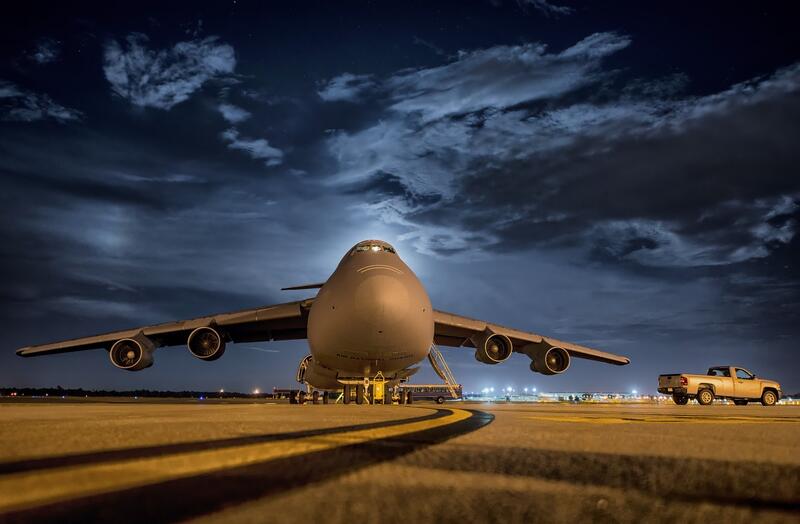Reducing Carbon Footprints: Decarbonization Approaches for Air transport
This article explores decarbonization approaches for air transport, discussing current and potential solutions to reduce carbon footprints in the aviation industry.

Air transport is one of the fastest-growing industries in the world, with more than 4 billion passengers flying annually. However, this growth has come at a cost, with aviation accounting for approximately 2% of global carbon emissions. Decarbonisation in the air transport sector is therefore essential to mitigate the impact of climate change. This article will discuss what decarbonisation in the air transport sector is, why it is important, the main sources of carbon emissions, how to reduce carbon emissions, the challenges facing decarbonisation, and the implications of decarbonisation for the air transport sector.
What is Decarbonisation in the Air Transport Sector and Why is it Important?
Decarbonisation in the air transport sector refers to reducing or eliminating carbon emissions from aviation. This is important because aviation is a significant contributor to global carbon emissions, and its impact on climate change is expected to increase in the coming years. According to the International Civil Aviation Organization (ICAO), aviation is responsible for approximately 2% of global carbon emissions, and this is expected to increase to 3% by 2050. This increase is due to the projected growth in air travel, which is expected to double by 2037.
In addition to carbon emissions, aviation also contributes to other environmental impacts, such as noise pollution, air pollution, and land use. Therefore, decarbonisation in the air transport sector is not only important for mitigating climate change but also for reducing the overall environmental impact of aviation.
Main Sources of Carbon Emissions in the Air Transport Sector
The main sources of carbon emissions in the air transport sector are aircraft operations, ground operations, and infrastructure. Aircraft operations account for approximately 90% of carbon emissions, with the remaining 10% coming from ground operations and infrastructure.
Aircraft operations include takeoff, cruising, and landing. During these phases, aircraft burn fuel, which releases carbon dioxide (CO2) and other greenhouse gases into the atmosphere. The amount of carbon emissions depends on several factors, such as the type of aircraft, the distance traveled, and the load factor.
Ground operations include activities such as aircraft maintenance, catering, and ground transportation. These activities also use fuel and contribute to carbon emissions.
Infrastructure includes airports, air traffic control, and other facilities. These facilities require energy for lighting, heating, and cooling, which also contributes to carbon emissions.
How to Reduce Carbon Emissions in the Air Transport Sector
Reducing carbon emissions in the air transport sector requires a combination of measures, including technological improvements, operational changes, and alternative fuels.
Technological improvements include the development of more fuel-efficient aircraft, such as the Boeing 787 and Airbus A350. These aircraft use lighter materials, more efficient engines, and advanced aerodynamics to reduce fuel consumption and carbon emissions. In addition, the use of electric and hybrid-electric aircraft is being explored, although these technologies are still in the early stages of development.
Operational changes include measures such as reducing aircraft weight, optimizing flight paths, and improving air traffic management. These measures can reduce fuel consumption and carbon emissions by minimizing the time aircraft spend in the air and reducing the distance traveled.
Alternative fuels, such as biofuels and synthetic fuels, can also reduce carbon emissions. Biofuels are made from renewable sources, such as plant matter or waste, and can reduce carbon emissions by up to 80% compared to traditional jet fuel. Synthetic fuels are made from renewable energy sources, such as solar or wind power, and can be carbon-neutral or even carbon-negative.
Challenges Facing Decarbonisation in the Air Transport Sector
Decarbonisation in the air transport sector faces several challenges, including technological limitations, infrastructure constraints, and economic barriers.
Technological limitations include the high cost of developing and implementing new technologies, such as electric and hybrid-electric aircraft. In addition, these technologies may not be suitable for all types of aircraft or routes, which limits their effectiveness.
Infrastructure constraints include the need for new infrastructure, such as charging stations for electric aircraft and biofuel production facilities. These facilities require significant investment and may not be available in all locations.
Economic barriers include the high cost of alternative fuels, which can be up to three times more expensive than traditional jet fuel. In addition, the aviation industry operates on thin profit margins, which makes it difficult to invest in new technologies and infrastructure.
Implications of Decarbonisation for the Air Transport Sector
Decarbonisation in the air transport sector has several implications for the industry, including changes in aircraft design, operational procedures, and fuel supply chains.
Changes in aircraft design will require significant investment and may result in higher costs for airlines and passengers. However, these changes may also lead to more efficient and comfortable aircraft, which could improve the passenger experience.
Operational procedures may also need to change to accommodate new technologies and infrastructure. For example, airports may need to install charging stations for electric aircraft, and air traffic control may need to adjust flight paths to optimize fuel efficiency.
Fuel supply chains may also need to change to accommodate alternative fuels. This could lead to new partnerships between airlines, fuel suppliers, and renewable energy companies.
Conclusion
Decarbonisation in the air transport sector is essential to mitigate the impact of climate change. The main sources of carbon emissions in the air transport sector are aircraft operations, ground operations, and infrastructure. To reduce carbon emissions, a combination of measures is needed, including technological improvements, operational changes, and alternative fuels. However, decarbonisation in the air transport sector faces several challenges, including technological limitations, infrastructure constraints, and economic barriers. The implications of decarbonisation for the air transport sector include changes in aircraft design, operational procedures, and fuel supply chains. Overall, decarbonisation in the air transport sector is a complex and challenging task, but it is essential for a sustainable future.